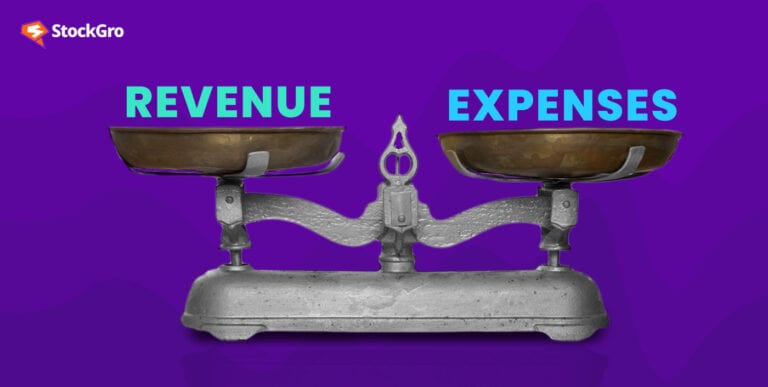
The world of stocks can sometimes seem like a complex web of numbers, percentages, and confusing terminology. However, once you break it down, it becomes less intimidating.
One of the central concepts to understand in this universe is the idea of “dividend stocks”. But what is a dividend? And more specifically, what is ‘dividend’ in the share market? Let’s dive in!
What is a dividend?
A dividend is essentially a reward that companies give to their shareholders. Think of it as a piece of the profit pie. When a company does well and makes a profit, they often share a portion of that profit with their shareholders. This shared profit is known as a dividend.
If you own shares in a company that gives out dividends, you’ll receive a specific amount for each share you own. It’s one way for companies to say “thank you” to their loyal investors.
You may also like: Dividend Reinvestment Plans (DRIPs) for long-term wealth creation!
Dividend stocks – what does it mean?
So, we’ve understood what a dividend is. Now, let’s move to “dividend stocks”. When people mention dividend stocks, they’re referring to shares of companies that regularly give dividends to their shareholders.
Not all companies do this. Some prefer to reinvest all their profits back into the business. But others, especially well-established ones with steady income streams, distribute a part of their profits as dividends.
Dividend in share market
The stock market isn’t just about buying low and selling high. It’s also about earning through dividends. In the share market, companies that offer dividends can be an attractive option for investors looking for regular income in addition to the potential growth of their stock value.
Why? Because even if the stock price doesn’t increase (or even if it decreases), you can still earn money through dividends. This dual-earning potential makes dividend stocks a favourite among many, especially those looking for more stable and predictable returns.
Also Read: Dividend Rate vs. Dividend Yield
Features of dividend
Understanding the features of dividend can provide clarity about why they are significant and how they can benefit investors:
- Regular income source: One of the primary features of dividends is that they provide investors with a consistent income stream. This can be especially appealing to retirees or those looking for consistent returns without selling their shares.
- Reinvestment option: Many companies offer dividend reinvestment plans (often referred to as DRIPs). This allows shareholders to use their dividend earnings to purchase more shares of the company, potentially leading to even more dividends in the future.
- A sign of company health: Companies that regularly pay dividends are often financially stable. Regular dividends can indicate a company’s confidence in its future earnings.
- Tax implications: Depending on your country or region, dividends might be taxed differently than regular income or capital gains. It’s essential to be aware of these implications and plan accordingly.
- Not guaranteed: It’s crucial to understand that dividends are not always guaranteed. A company can decide to cut or eliminate its dividend payments if facing financial difficulties.
Stock market dividend and you
How does this all translate to your investment journey?
If you’re starting, focusing on dividend stocks can be an excellent way for you to get familiar with the stock market. They can provide a cushion against the market’s inherent volatility and offer a sense of security with regular income.
Additionally, understanding the significance of dividends can help in making informed decisions about which stocks to purchase.
| Feature | Cash Dividend | Stock Dividend |
| Type of Payout | Monetary | Additional shares of stock |
| Liquidity Impact | Reduces company’s cash reserves | No immediate impact on cash reserves |
| Taxation | Generally taxed when received | Generally not taxed until sold |
| Shareholder Choice | No choice; receive cash | No choice; receive additional shares |
| Effect on Stock Price | Usually decreases after dividend | May dilute share value |
| Flexibility for Investor | Can reinvest or spend as they wish | Adds to ownership, must sell to realize cash |
| Dividend Yield Impact | Can increase dividend yield | May reduce dividend yield |
| Company’s Balance Sheet | Decreases assets and equity | Equity is redistributed |
| Share Count | Remains the same | Increases |
However, it’s always essential to do your own research. Just because a company offers dividends doesn’t mean it’s the right fit for your investment portfolio. Look into the company’s financial health, its history of dividend payments, and future prospects.
Also Read: Unlocking the power of preference shares
Diving Deeper into Dividend Stocks
Now that we have a foundational understanding of dividends and their role in the stock market, let’s delve deeper into making them work for you.
How do you choose dividend stocks?
While the allure of receiving a regular income from dividend stocks is undeniable, it’s essential to be selective and strategic in your choices. Here’s a simple guide to help you choose:
- Dividend yield: It’s a metric that shows the ratio of the annual dividend to the stock’s current price. While a higher yield might seem attractive, it’s essential to consider the company’s ability to maintain it. Sometimes, an unusually high yield can be a sign of financial distress.
- Dividend history: Companies that have a long track record of consistently paying dividends are typically more reliable than those that have just started.
- Payout ratio: This indicates the portion of earnings a company pays out as dividends. A lower payout ratio can suggest that a company is reinvesting in its growth, while a higher one can indicate generous rewards to shareholders. However, an excessively high ratio might be unsustainable.
- Company’s financial health: Review the company’s balance sheet, cash flow, and other financial statements. A company in good financial health is more likely to sustain its dividend payouts.
Dividend stocks vs. growth stocks
You might often hear about another category of stocks – growth stocks. These are companies that reinvest their profits into expanding the business rather than paying out dividends. They can offer significant returns if the company grows, but they don’t provide the regular income that dividend stocks do.
For many investors, a balanced portfolio that includes both dividend and growth stocks can offer the best of both worlds: potential for significant capital appreciation and steady income.
Also Read: Power your investment portfolio with growth stocks
Risks associated with dividend stocks
While dividend stocks can be a more stable investment, there are still risks:
- Dividend cuts or omissions: If a company faces financial challenges, it may reduce or entirely stop its dividend payments.
- Overexposure: Investing too heavily in dividend stocks might mean missing out on other assets’ growth potential.
- Market volatility: Like all stocks, the value of dividend stocks can fluctuate based on market conditions.
Tips for beginner investors
- Diversify: Don’t put all your eggs in one basket. Ensure your portfolio has a mix of dividend stocks from various sectors.
- Stay informed: Keep an eye on the companies you’ve invested in and the overall economic environment.
- Seek advice: If you’re unsure, consider speaking to a financial advisor who can guide you based on your financial goals.
Key Strategies for Investing in Dividend Stocks
Investing in dividend stocks can be a powerful way to build wealth over time, especially if you’re looking for consistent income and long-term growth. But to make the most out of your investment, it’s important to adopt the right strategies. Here are some key strategies for investing in dividend stocks:
1. Look for Dividend Consistency
One of the first things to consider when investing in dividend stocks is the consistency of dividend payments. Companies with a long track record of paying dividends—preferably increasing dividends—are generally a safer bet for investors seeking income.
- Tip: Look for companies that have paid dividends consistently for at least 5-10 years. Companies with a track record of increasing dividends every year, like Coca-Cola or Procter & Gamble, are often solid choices.
2. Focus on Dividend Yield and Payout Ratio
The dividend yield represents the annual dividend paid by the company relative to its stock price. While a high dividend yield might seem attractive, you need to check if the company can sustain it.
- Tip: A sustainable payout ratio (the percentage of earnings paid out as dividends) is key. A payout ratio higher than 75% might indicate the company is paying out too much of its earnings, potentially at the cost of reinvestment or future growth.
3. Diversify Your Dividend Portfolio
Just like with any investment strategy, diversification is important. Investing in different sectors can help reduce risk, especially since some sectors might perform better than others during certain market conditions.
- Tip: Spread your investments across multiple sectors like utilities, consumer goods, and healthcare, which are known for their reliable dividends.
4. Reinvest Dividends for Compound Growth
One of the most powerful ways to grow your wealth through dividends is by reinvesting them. This strategy is known as Dividend Reinvestment Plans (DRIPs).
- Tip: With a DRIP, dividends are automatically used to purchase more shares of the stock, allowing your portfolio to grow over time without having to make additional investments.
5. Check the Company’s Debt Levels
While dividends can be a good source of passive income, they may not be sustainable if the company has too much debt. High debt levels can limit a company’s ability to pay dividends in the future.
- Tip: Look for companies with a low debt-to-equity ratio and strong financials, ensuring they can weather economic downturns while continuing to pay dividends.
Dividend ETFs vs. Dividend Stocks
When it comes to investing in dividend-paying assets, investors have two primary choices: individual dividend stocks or dividend ETFs. Let’s explore the key differences and pros and cons of each option.
Dividend Stocks:
Dividend stocks are individual stocks that pay a portion of their earnings to shareholders in the form of dividends. These stocks are typically from well-established companies with a history of reliable dividend payments.
Pros of Dividend Stocks:
- Higher Dividend Yield: Some individual dividend stocks can offer higher yields than ETFs.
- Direct Ownership: When you own individual stocks, you directly own the company and can have voting rights in some cases.
- Potential for Capital Appreciation: In addition to dividends, dividend stocks may also experience capital gains over time.
Cons of Dividend Stocks:
- Risk: Individual stocks can be volatile, and companies may cut or eliminate dividends during tough times.
- Lack of Diversification: If you own just a few dividend stocks, your portfolio could be more exposed to the performance of those specific companies or sectors.
Dividend ETFs:
Dividend ETFs (Exchange-Traded Funds) are funds that hold a basket of dividend-paying stocks. These ETFs are designed to provide broad exposure to a range of dividend-paying companies, providing investors with instant diversification.
Pros of Dividend ETFs:
- Diversification: Dividend ETFs automatically provide exposure to a variety of dividend-paying stocks, reducing the risk of relying on a single company.
- Lower Risk: The diversification within an ETF spreads risk across many sectors, reducing the impact of a single company’s performance.
- Ease of Investment: ETFs are easy to buy and sell on the stock market like any other stock, making them convenient for passive investors.
Cons of Dividend ETFs:
- Lower Dividend Yield: Due to diversification, some dividend ETFs may offer a slightly lower yield compared to individual high-dividend stocks.
- Management Fees: Most ETFs charge a management fee, which can reduce the total return over time.
Wrapping it up
Dividend stocks have long been a cornerstone of many successful investment portfolios. Their ability to provide capital appreciation and regular income makes them a valuable tool for new and experienced investors.
The more you understand about dividends and how they fit into the broader picture of investing, the better you’ll be able to make informed decisions aligning with your financial goals.
Whether you’re looking for stability, growth, or a mix of both, the stock market offers opportunities galore. Happy investing!
FAQs
How does a dividend stock work?
A dividend stock pays shareholders a portion of its earnings, typically quarterly or annually, in the form of cash or additional shares. The amount is determined by the company’s board of directors, and the dividend is usually paid out to shareholders who own the stock before the Ex-Dividend Date.
Is it good to invest in dividend stocks?
Yes, investing in dividend stocks can be a great way to earn passive income while also benefiting from the potential for capital appreciation. However, it’s important to focus on companies with a history of reliable dividends and to assess the sustainability of their payouts.
What is stock dividend with an example?
A stock dividend is when a company pays dividends in the form of additional shares of stock rather than cash. For example, if a company declares a 5% stock dividend and you own 100 shares, you will receive 5 additional shares as your dividend. This is common with companies looking to retain cash for reinvestment in the business.
How do you make money from dividends?
You can make money from dividends in two ways:
- Cash dividends: These are payouts made directly to your brokerage account, which you can either withdraw or reinvest.
- Reinvested dividends: Through a Dividend Reinvestment Plan (DRIP), your dividends are automatically used to buy more shares of the company, helping your investment grow over time.

